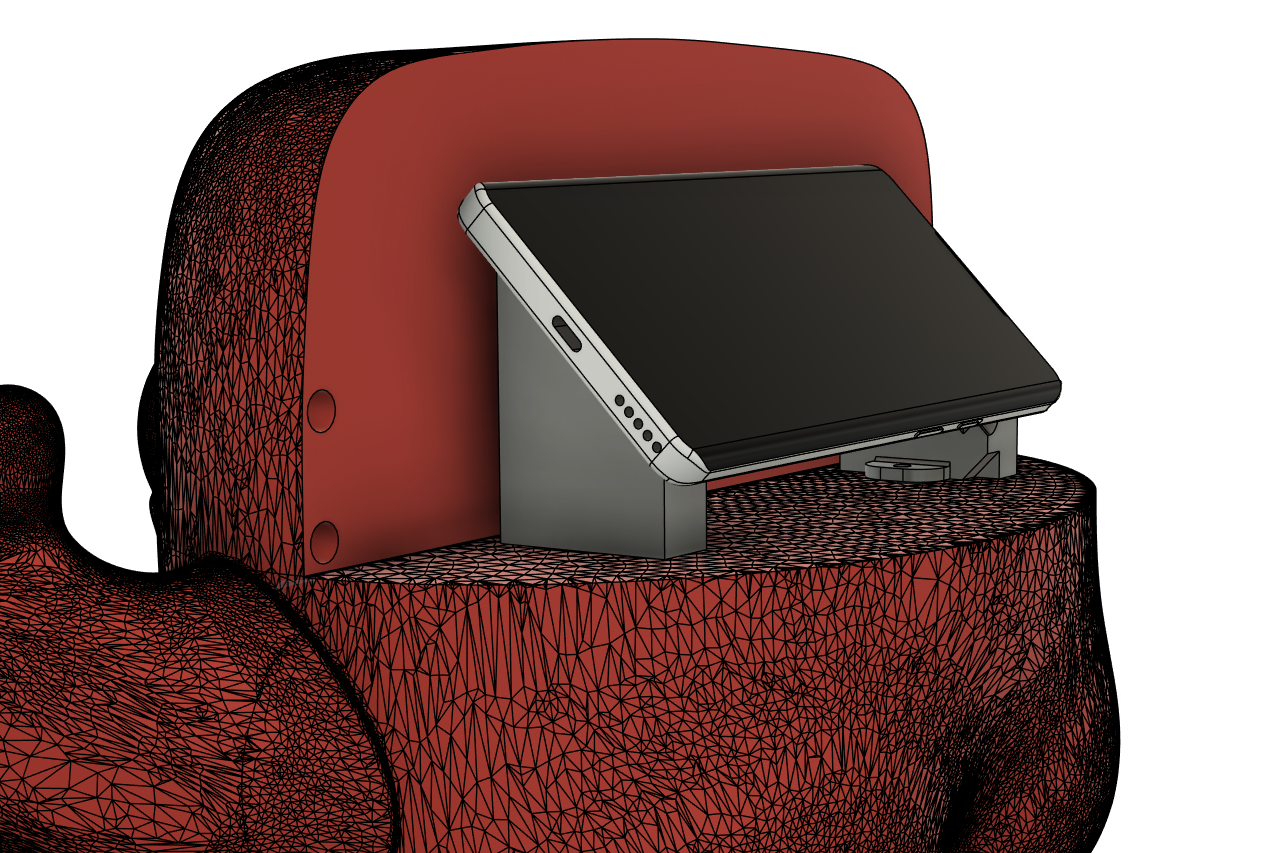Super Meatboy Arcade Machine
Unleashing the Arcade Beast: The Super Meat Boy Gaming Extravaganza!
Introduction
Greetings fellow tinkerers! Today, we’re delving into the nuts and bolts of the Super Meat Boy arcade machine project. No flashy slogans, just a straightforward exploration of how we took on the challenge of turning an iconic character into a functional arcade setup. Join us as we break down the process of engineering an interactive twist to the classic gaming experience.

The Concept
The concept behind the Super Meat Boy arcade machine was both simple and ambitious. My goal was to create an immersive gaming experience that seamlessly blended the digital and physical realms. To achieve this, I decided to use an old mobile phone as the brains of the operation, running the Super Meat Boy game on its screen. It provided all the compute power needed, boasting a high-definition screen and decent battery life, eliminating the need for an external power source and ensuring a smooth gaming experience.
What distinguishes this arcade is the clever use of hidden furniture hinges. These hinges enable the character’s head to cleverly split open, unveiling a concealed compartment housing the “brain”. I.e. all the arcade gubbins.

Engineering the Hidden Furniture Hinges
The hidden furniture hinges utilized in the Super Meat Boy arcade machine are commonly found in cabinet making and small projects like cigar boxes. What sets these hinges apart is their remarkable ability to open a full 180 degrees, providing the character’s head with a wide, unobstructed view of the screen.
Incorporating two hinges on each side, the engineering challenge lay in achieving a flawless 180-degree opening. An oversight in the initial CAD design resulted in insufficient tolerance. To remedy this, manual adjustments using a Dremel became necessary to widen the holes, allowing for smooth and unrestricted movement.

To enhance the user experience further, magnets were later added to the skull during the construction phase. This addition, though not part of the original CAD design, provides a secure closure, ensuring the head stays firmly in place when not in its open position.
Phone Holder
I wanted a way to hold the phone in the head, but not have it permanently attached as I may decide in the future to use it on another project. I decided the best way forward was a phone holder that could be swapped out from the main design, as well as a holder which the phone could be easily removed from. This gives endless flexibility for the future.
I used heated inserts for the phone holder, rather than a captive nut design. This is the first project i’ve used them on and they are amazing. The really key thing I remembered was adding some holes in the holder, so it could be screwed down with relative ease. CAD pic below, you can see where the brackets are for the screws.

Paint Job
The aesthetic allure of the Super Meat Boy arcade machine is not only embedded in its engineering but also in its vibrant paint job. Drawing from my experience in painting Warhammer miniatures and D&D figures, I applied meticulous skills to recreate the popping colors seen in the original video game reference images.
One noteworthy technique employed in this painting endeavor is dry brushing. This technique involves using a brush with a small amount of paint on its bristles and then removing most of it by wiping it off on a paper towel or similar surface. The remaining paint is then lightly brushed onto the model’s surface. Dry brushing is particularly effective for highlighting raised areas and adding texture. In the context of the Super Meat Boy arcade machine, this technique played a crucial role in capturing the dynamic and visually striking elements present in the game’s design.
Following the intricate painting process, a final touch was added to ensure the longevity and protection of the model. A layer of matte acrylic varnish was sprayed onto the arcade machine, serving not only as a sealant but also enhancing the overall finish.
3D Printing
And of course, this whole thing was 3D printed on my Bambu P1S 3D printer. Pretty banging machine and it was very nice having a lot of confidence that these very large parts, with the biggest being 700G of filament in on go, were actually going to print. Very happy i’ve upgraded from my Ender.
Conclusion
n the world of DIY gaming, the Super Meat Boy arcade machine is a testament to the fusion of engineering precision and creative flair. From the ingenious use of hidden furniture hinges and the repurposing of an old mobile phone for the gaming screen to the meticulous Warhammer-inspired paint job with dry brushing techniques, each aspect reflects a commitment to both form and function. The split-open head, revealing the gaming “brain,” and the neatly integrated wireless controller encapsulate the harmonious blend of artistry and engineering. Sealed with a layer of matte acrylic varnish, this arcade machine not only stands as a visual masterpiece but also embodies the iterative journey of turning imaginative visions into tangible DIY realities.
Model Attribution
This is a completely unofficial arcade machine, a fan project based on the original Super Meat Boy video game. If you like this project then checkout the game here - http://supermeatboy.com/
The original 3D model I used came from ChaosCoreTech on Thingiverse, Attribution below. Obviously edited slightly!
Super Meat Boy! by ChaosCoreTech is licensed under the Creative Commons - Attribution license.